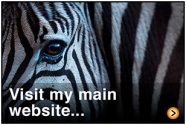Despite a bitter winter in western Europe, the dry start to 2011 has meant that many typical signs of spring are appearing early in the UK. Looking back, the impressive ‘supermoon’ that appeared in the night sky on the northern hemisphere spring equinox should have been a clear indicator that this year’s season of growth was going to be something special.
Spring means different things to different people. For some, it’s the return of swallows from Africa. For others, it’s the burst of colour as bluebells carpet our woodland. Whatever your favourite sign of spring may be, in our changing climate it is more important than ever to record these moments to map how our wildlife is adapting or being affected. If you are out and about in the UK and you’re seeing butterflies or hearing cuckoos then you can help build a picture of spring by logging what you’re seeing via the VisitWoods website.
For me, spring came alive in Suffolk over the Easter weekend as I was fortunate to hear my first booming bittern. The males of this red status bird only make this far-carrying call in the spring but the rarity of the species in the UK means that few people get to hear it. I also tracked down and saw my first cuckoo of the year after following its distinctive call. Hobby falcons skillfully catching dragonflies overhead and adders basking in the sun were unexpected but equally compelling.
After the cold and dark winter, the vibrant colours of spring are just as evocative to our senses as the sounds, smells and antics across the country. The brilliant yellow of gorse and the breathtaking blue of carpets of bluebells have inspired me to find, enjoy and photograph (in that order) as many signs of spring as possible. I’ll be adding images to the dedicated Signs of Spring portfolio on my main website as I go, so be sure to check it out.
Visit my main website at www.conservationphotojournalism.com













